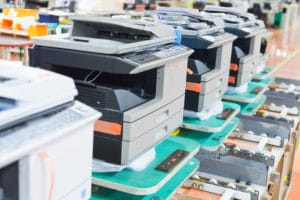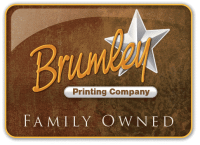 In our last article, “How to Choose an Office Printer – Part 1” we discussed some general questions to consider when selecting an office printer including what the printer will be used for, and the two primary types of office printers – inkjet printers and LED/Laser printers. Now it’s time to consider the available features and general costs. Let’s start by looking at some common office printer features.
In our last article, “How to Choose an Office Printer – Part 1” we discussed some general questions to consider when selecting an office printer including what the printer will be used for, and the two primary types of office printers – inkjet printers and LED/Laser printers. Now it’s time to consider the available features and general costs. Let’s start by looking at some common office printer features.
Wired and Wireless Office Printers
Wireless printing is a feature that’s available even in some relatively inexpensive home printers. And while it may seem like a convenience that you’d want from an office printer. After all, wireless setups are more flexible (some are even compatible with tablets and smartphones) and less expensive to deploy.
New technologies like Google’s Cloud Print, Apple’s AirPrint and Hewlett Packard’s ePrint are faster and more secure, but not all office printers are compatible with these technologies.
Wired printers, although typically more expensive to deploy and less flexible, tend to be faster and more secure.
Color and Monochrome Office Printers
If you’re getting an office printer primarily to print letters, spreadsheets, invoices and other common office documents, a monochrome printer may suit your needs just fine. On the other hand, if you print a lot of documents that include charts, graphs, and other visual elements you’ll need a color printer.
In addition to the initial purchase price – monochrome printers are typically less expensive – you should also consider the ongoing costs associated with color printers. Whether you go with an Inkjet or Laser/LED printer, the cost of toner or ink can add up quickly.
Single-Function and Multi-Function Office Printers
Among the biggest consideration when choosing an office printer is whether to go with a multi-function or single-function model. As the names imply, single-function printers do just that – print documents – and nothing else. Multi-function printers can handle a variety of tasks including making copies, scanning documents, converting documents, as well as faxing and emailing them.
While multi-function printers are typically more expensive than singe-function models, they offer saving by eliminating the need for other dedicated devices which can also take up more space in your office.
One drawback of multi-function printers is that they can only perform one function at a time which can create bottlenecks for you and your employees. For example, if you’re in the middle of a large print job and one of your employees needs to send a fax, one of you will simply have to wait while the other completes her task.
Office Printer Speed
When comparing office printers, you need to consider the speed and volume capabilities. In general, print speeds of 20 pages per minute or less are too slow for the office environment. While printer with print speeds of 100 pages per minute and higher are available, they can be prohibitively expensive for most small businesses.
A printer with a print speed of between 20 and 40 pages per minute will likely suit your needs without breaking your budget.
Other features to consider include:
- Print resolution which is typically referred to as dots per inch, or DPI
- Single- or Two-sided printing capabilities
- Most office printers come with between 64 MB and 256 MB of RAM
- USB and card reader capabilities which allow you to print without being connected to a computer
Purchase and Ongoing Office Printer Costs
As you might imagine, office printers run the spectrum from very inexpensive, basic inkjet models that can be found in the electronics departments of any big-box retailer and office supply shops for as little as $100, to high-end laser and LED models that can cost as much as $5,000 to over $10,000.
Making on-the-spot comparisons can be a little confusing, so it’s a good idea to make a written list of the features you really need beforehand. This can keep you from being sold on bells and whistles you don’t really need or selecting a model that doesn’t offer the enough features to perform the way you need it to.
If you need the features found in only high-end model but the purchase cost is beyond your means, you might want to consider leasing your office printer. Although you’ll pay more in the long run, some leasing agreements offer additional benefits, like scheduled maintenance and trade-in options that you won’t get otherwise.
We hope you’ve found this series on office printers helpful. For printing jobs that require a professional printing company, Brumley Printing Company has you covered. Call us today at 817-336-5551 or contact us via email to learn more about our digital, offset and Stochastic printing, and other services.
